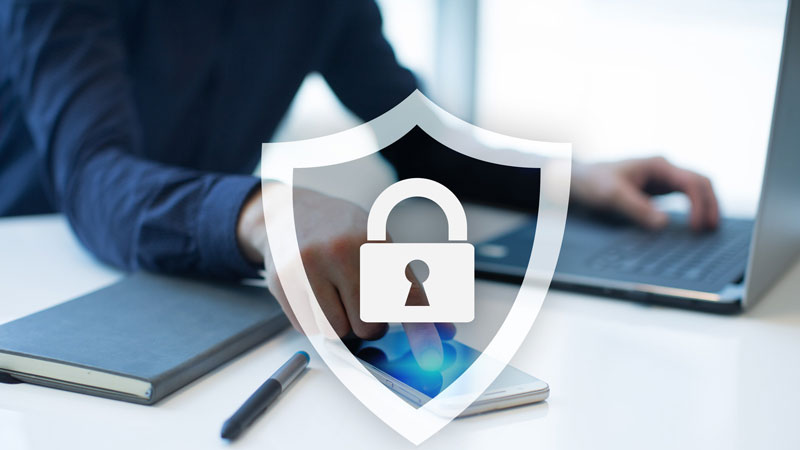
Table of Contents
All industries face cybersecurity threats that can compromise their sensitive data. In healthcare, cybersecurity issues can affect operations and put patient safety at risk. Cybersecurity breaches in healthcare occurred at an alarming rate throughout 2022. Healthcare providers and their EHR vendors and business associates like medical transcription companies need to strictly implement cybersecurity best practices to secure, monitor, and maintain protected health information (PHI).
Why Data Security is a Major Concern in Healthcare
Healthcare organizations are especially vulnerable to cyberattacks because they possess a lot of information of high monetary and intelligence value. As small medical practices have less resources to protect against cybersecurity incidents, they may be more vulnerable to hacking. In addition to patients’ protected health information (PHI) such as Social Security numbers, healthcare systems store financial information like credit card and bank account numbers, and intellectual property related to medical research and innovation.
Common threats to EHRs include phishing attacks, malware, and cloud threats. Stolen medical information is used to create fake IDs to purchase medical equipment or drugs, or to file a false insurance claim, according to Reuters. It is estimated that the cost of a breach in the healthcare industry is almost three times higher than any other industry.
Ten Strategies to Improve Cybersecurity in Medical Practices
Medical practices can improve their cyber security by implementing the following measures:
- Establishing a security culture: Medical practices must instill a security culture in all EHR users. Measures to protect PHI will be successful only if practices establish and implement stringent security policies. Users need to be sensitized to the importance of safeguarding information and trained on how to recognize and respond to phishing attacks, malware, and other cyber threats. A security-minded organizational culture is critical to guard against malware, data theft or business interruption. Practices should also assess their cyber security risks by regularly assessing employees’ security awareness, behaviors and culture. This will help identify any vulnerabilities in their systems.
- Mandating multi-factor authentication: Practices should implement multi-factor authentication to add an extra layer of security to logins and minimize risk of unauthorized access to patient data. Multi-factor authentication combines two or more methods of authentication – passwords, biometric verification such as retina, fingerprint, or facial recognition, personal identification numbers (PINs), one-time passwords (OTPs), user location, and time-based authentication. A Physicians Practice article says that the easiest solution for small practices is to implement a password manager. In addition to generating and encrypting complex passwords, a password manager eliminates the need to remember or store multiple, unsecured passwords on the practice system.
- Backing up and encrypting data: To ensure recoverability after a disruption, off-site data backup and encryption is vital. Data should be backed up in more than one location so that it would be available in case of hardware loss or failure. Encrypting the data ensures that even if it falls into the wrong hands, it cannot be read or accessed without a decryption key.
- Implementing access controls: Access controls should be implemented to protect against known vulnerabilities. In fact, beyond using technologies, HIPAA requires covered entities to ensure that patient information is secure, accessible only by authorized personnel, and used only for authorized purposes. This will ensure that only authorized personnel have access to patient data.
- Restricting and logging access to data: Implementing access controls supports data protection by restricting access to PHI and certain applications to only those employees who need access to perform their jobs. With access restrictions, user authentication will be required to access protected Practices should also log all data access. Tracking data access and usage will allow providers and medical transcription service providers to monitor who accesses what information, applications, and other resources, when, and from what devices and locations. If a breach occurs, an audit trail can pinpoint where it occurred.
- Establishing data usage controls: Another best practice to protect patient information is implementing data usage controls. The first step is to identify sensitive data and tag it for the proper level of protection. Next, data controls should be implemented to prevent specific actions involving this confidential information, such as web uploads, unauthorized email sends, copying to external drives, or printing.
- Regularly updating software: Medical practices should ensure that all software is updated regularly with the latest security patches and fixes. even if a computer that has all of the latest security updates to its operating system and applications, without anti-virus software, data can be stolen, destroyed, or defaced. It is important to use anti-virus software that provides continuously updated protection against the latest computer viruses and malware. Best practice is to ensure real-time protection by choosing the option for automatic updating overnight, restricting disruptions to practice operations (www.physicianspractice.com).
- Preventing email compromises: Email compromises are one of the most common and damaging cybersecurity issues in healthcare, especially with the increasing use of remote options. Scam emails that seem to come from legitimate sources try to capture recipients’ attention and entice them to take “urgent” action by clicking on a link containing malicious code. One method that physicians can use to protect their email is by using sub-addressing or plus addressing. This technique allows you to ensure that the email is from a legitimate patient, partner, vendor, or external account. It involves adding a plus sign (+) followed by a unique identifier after your email address, before the “@” symbol. You can create multiple variations of your email address which will continue to direct to your original email account, but allows you to filter and track the message source and block unwanted emails. By automatically sorting incoming messages, filters can also help reduce junk mail.
- Protecting mobile devices: Mobile devices, such as laptop computers, tablets, smartphones, and portable storage media can pose unique threats to information privacy. All devices, settings, and configurations should be properly managed with security measures such as:
- strong passwords and application data encryption
- Enabling the feature of remotely wiping and locking lost or stolen devices
- Preventing email malware infections
- Educating users on mobile device security best practices
- Ensuring that only applications meeting pre-defined criteria can be installed
- Installing mobile security software and keeping devices updated
- Setting up a cyber security incident response plan: Medical practices should have a plan in place to respond to cyber security incidents, including steps to contain and remediate the incident and to notify affected individuals.
Outsource Medical Transcription to a HIPAA Compliant Company
Vulnerabilities or weak points in a healthcare organization’s security can lead to costly data breaches and associated detrimental impacts, from reputation damage to penalties from regulatory agencies. Healthcare providers should proactively identify by implementing the above-listed measures, improve their cyber security and better protect patient data. Practices should take care to outsource their transcription only to a HIPAA-compliant medical transcription company. Such companies have effective cybersecurity strategies in place to safeguard the electronic protected health information (ePHI) they handle from any kind of physical, administrative, or technical breach.
Concerned about potential data breaches when outsourcing transcription?
Reach out to our HIPAA-compliant medical transcription company and enjoy peace of mind!
Assess our precision and punctuality by taking advantage of our Free Trial.


